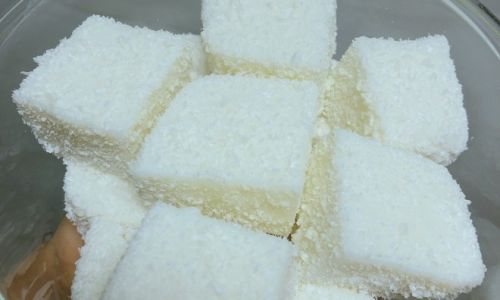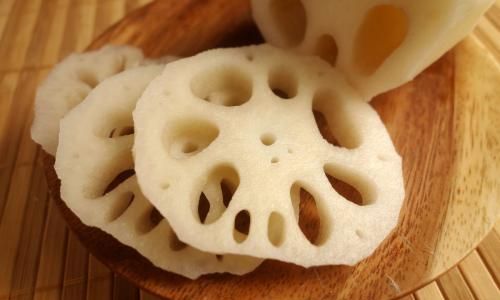Introduction
In the vast tapestry of Chinese cuisine, baozi, or steamed buns filled with various savory or sweet fillings, occupy a revered place. Their soft, fluffy exterior and flavorful interiors have captivated palates across generations. However, there’s a lesser-known variant that takes this traditional delight to a whole new level of indulgence—deep-fried baozi. Imagine the crispiness of a fried doughnut combined with the warmth and comfort of a steamed bun, encapsulating a mouthwatering filling. This culinary fusion is not just a treat for the taste buds but also an adventure in texture and flavor. In this article, we embark on a journey to master the art of making deep-fried baozi, exploring every step from dough preparation to the perfect frying technique.
The History and Origins

The origins of baozi are shrouded in history, with early references dating back to the Han Dynasty (206 BCE – 220 CE). Initially, they were known as “man tou,” a simple steamed bread made from fermented dough. Over time, fillings were introduced, transforming them into the beloved baozi we know today. Deep-fried baozi, while less common than their steamed counterparts, have their own unique history and regional variations. In some parts of China, particularly in Sichuan and Jiangsu provinces, fried buns are a cherished street food, often filled with pork, beef, or vegetables, and served hot and crispy.
Ingredients and Tools
Before diving into the recipe, let’s gather the necessary ingredients and tools:
-
Ingredients:
- Dough:
- 400g all-purpose flour
- 200ml warm water
- 1/2 teaspoon active dry yeast
- 1/2 teaspoon sugar
- 1/2 teaspoon baking powder (optional, for extra fluffiness)
- 1 tablespoon vegetable oil
- Salt to taste
- Filling: (Choose your favorite)
- Pork (ground), mixed with soy sauce, sesame oil, ginger, garlic, green onions, and salt
- Vegetables (shredded carrots, cabbage, and mushrooms), seasoned with soy sauce, sesame oil, and salt
- Sweet fillings like red bean paste or lotus seed paste for dessert versions
- For frying:
- Vegetable oil (enough to submerge the baozi)
- Water (for the water-fry method, if preferred)
- Dough:
-
Tools:
- Mixing bowls
- Dough hook or wooden spoon
- Clean kitchen towel or plastic wrap
- Bamboo steamer or steam basket (optional, for steaming before frying, if desired)
- Deep frying pan or wok
- Slotted spoon or frying basket
- Paper towels for draining
Step-by-Step Recipe
Dough Preparation
Begin by activating the yeast. In a small bowl, combine warm water, sugar, and a pinch of flour. Stir until the sugar dissolves and let it sit for about 5 minutes until frothy. This indicates that the yeast is active.
In a large mixing bowl, combine the flour, baking powder (if using), and a pinch of salt. Create a well in the center and pour in the yeast mixture and vegetable oil. Gradually mix the ingredients together until a shaggy dough forms. Transfer the dough to a lightly floured surface and knead for about 8-10 minutes until it becomes smooth and elastic.
Place the dough in a lightly oiled bowl, cover with a clean kitchen towel or plastic wrap, and let it rise in a warm, draft-free place for about 1-2 hours, or until it has doubled in size.
Preparing the Filling
While the dough is rising, prepare your filling. For a classic pork filling, combine ground pork with soy sauce, sesame oil, finely chopped ginger, garlic, green onions, and salt. Mix well until the meat is evenly coated with the seasonings. For a vegetarian option, mix shredded vegetables with soy sauce, sesame oil, and salt to taste. Adjust the seasoning according to your preference.
Shaping the Baozi
Once the dough has risen, punch it down to release any air bubbles. Divide the dough into equal portions, depending on the desired size of your baozi. Roll each portion into a ball and then flatten it with your palm. Use a rolling pin to roll out each ball into a thin circle, about 5-6 inches in diameter.
Place a spoonful of filling in the center of each dough circle. Pleat the edges to seal the baozi, creating a pleated pattern if desired. Alternatively, you can simply fold the dough over the filling and pinch the seams to close.

Optional Steaming (for a lighter texture)
If you prefer a lighter texture with a bit of steaminess, you can steam the baozi before frying. Place them in a bamboo steamer or steam basket lined with parchment paper or banana leaves. Steam over boiling water for about 10-12 minutes, or until the dough is cooked through but not overly soft. Let them cool slightly before frying.
Frying the Baozi
Heat vegetable oil in a deep frying pan or wok over medium-high heat until it reaches about 350°F (175°C). You can test the oil’s readiness by dropping a small piece of dough into it; it should sizzle and rise to the surface immediately.
Carefully lower the baozi into the hot oil, a few at a time to avoid overcrowding. Fry them until they are golden brown and crispy, turning them occasionally for even cooking. This should take about 3-4 minutes per batch.
Alternatively, you can use the water-fry method, which reduces溅油 and makes the baozi less greasy. To do this, add a few tablespoons of water to the hot oil before adding the baozi. The water will create a steaming effect, cooking the baozi partially through before the oil takes over for the crispy exterior.
Draining and Serving
Once the baozi are golden and crispy, use a slotted spoon or frying basket to remove them from the oil. Place them on a plate lined with paper towels to drain excess oil.
Serve the deep-fried baozi immediately while they are hot and crispy. They can be enjoyed on their own or accompanied by a dipping sauce made from soy sauce, vinegar, sesame oil, and a touch of chili oil for an extra kick.
Conclusion
Mastering the art of deep-fried baozi is a rewarding culinary endeavor that combines tradition with innovation. From the initial stages of dough preparation to the final fry, each step requires attention to detail and patience. The result is a dish that delights the senses with its golden crispiness, warm interior, and flavorful filling. Whether you opt for a classic pork filling or explore vegetarian options, deep-fried baozi offer a delightful twist on a timeless culinary staple.
As you embark on your own culinary journey, remember that the beauty of cooking lies in experimentation and personalization. Feel free to adapt this recipe to your taste preferences, whether it’s exploring different fillings, adjusting the seasoning, or incorporating unique cooking techniques. The key to success is practice and a willingness to embrace the imperfections that come with the creative process.
So, gather your ingredients, roll up your sleeves, and dive into the world of deep-fried baozi. Let the aroma of freshly fried dough and savory fillings fill your kitchen, and enjoy the satisfaction of creating a dish that brings joy to those who taste it. Happy cooking!






0 comments